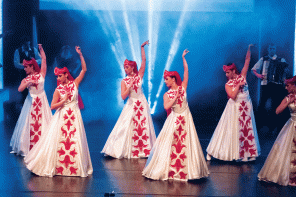As any sports fan — or movie buff who has seen “Gladiator” — knows, the athlete’s story arc often comprises three acts.
There’s the rise. There’s the fall — well, maybe sometimes more like a stumble or a blip. And there’s the comeback to greater heights usually attained through greater wisdom.
On a very bad Sunday in a sweltering New York — July 18,1999 — David Cone touched the transcendent, raising the city above its tragic pall by pitching a perfect game for the New York Yankees against the Montreal Expos at medium-old Yankee Stadium. As so often happens with the Yanks at home, there was a touch of magic in the air as the Bombers honored Yogi Berra, their legendary backstop and former manager, with Berra’s battery mate in the only perfect World Series game, Don Larsen, also in attendance. So there was a sense that something might happen — or maybe that’s just the way it seems in hindsight.
Something good needed to happen. Two days earlier, the nation had been transfixed by tragedy as a golden boy fell like Icarus out of the sky: John F. Kennedy Jr. was dead in a plane crash on his way to Martha’s Vineyard for the wedding of his cousin, Rory, and with him his wife, the former Carolyn Bessette, and her sister Lauren. A couple of days before that, he was seen at the stadium, laughing and enjoying a game.
Now he was gone and a mournful city gathered around the communal TV once more as we reporters held our breath: Coney was going to do it. He was going to join the baseball immortals.
It seems fitting that Cone’s great day should’ve been tinged with Kipling-esque triumph and disaster as his playing career has seen both the Churchillian success that is never final and the failure that is never fatal. He was part of the brilliant bad-boy New York Mets team of the late 1980s and early ’90s. (Indeed, Cone has the distinction of being the only 20-game winner for both the Amazins and the Bombers.)
Hard-partying pride, however, goeth before the fall, and the Mets of that era were ultimately broken up, with Cone finding himself exiled from the city only to return to the place of his greatest success, this time with the Yanks and a newfound maturity.
“After his first year with the Yankees — by 1996, that is — Cone had assumed a unique and self-invented role with the dynastic and once disputatious old champions as a team spokesman,” the distinguished New Yorker baseball writer Roger Angell wrote in “A Pitcher’s Story: Innings With David Cone” (Warner Books), “an anchorman explainer of controversial plays, dugout gossip and player psyches, and the daily run of rumors, anxieties, injuries and front-office maneuverings that afflict every clubhouse over the long season, never more than in New York.”
This has served Cone, a former Greenwich resident who now lives in another Greenwich (Village), in good stead in his current role, as color commentator for the Yanks on their Yes Network and WPIX — with Forbes magazine hailing him for his blend of accessibility and analytics — and in his public appearances, such as a recent one at Lord & Taylor in Eastchester on behalf of its Shop Smart Do Good campaign.
He is a once-and-future prince of the city. But it hasn’t been without cost.
The ascent
David Brian Cone grew up in Kansas City, Missouri, in the 1960s, the youngest of four children in a strict Irish Catholic blue-collar family. Dad Ed was a hard-drinking, night-shift mechanic in a freezer at the Swift meat-processing plant who stood for the unions and the Democrats and against racism. Mom Joan was a secretary who became a travel agent. In an athletic, sports-crazy family, scrappy David was the most talented and competitive — the quarterback on the football team and a point guard on the basketball team at Rockhurst High School, run by the Jesuits. Through it all, his father — a disciplinarian who was never, however, a stage parent — would work with him on his pitching motion, teaching him to hold back a little in the windup. “That,” Cone said, “made me into a pitcher” (along with what Angell called “preternaturally long fingers” and “darting, down-moving stuff” that recalled Sandy Koufax).
Though he enrolled in the University of Missouri, Cone was drafted by the Kansas City Royals in 1981, playing for their minor league teams before making his big-league debut in relief of reigning Cy Young Award winner Bret Saberhagen on June 8, 1986. His world was about to expand: The following year he was traded to the Mets, who had stunned the Boston Red Sox in the 1986 World Series. (Two words — Bill Buckner.) Cone had a solid year with the ’87 Mets but things took off for him and the team in ’88 as he moved to the starting rotation and was a dazzling 20-3 with a 2.22 ERA. This was a team destined for World Series greatness, with a 10-1 regular season record against the rival Los Angeles Dodgers, whom they met in the National League Championship series. The Mets looked good — good and arrogant.
A pitcher stumbles
Contributing a column to the New York Daily News, Cone forgot the cardinal rule of sports playing and writing — never underestimate an opponent, particularly in print. The Mets lost to the Dodgers in seven games, with Cone playing the goat and the hero in three appearances. It was the beginning of four years of incandescence marred by the team’s frat-boy high jinks and sexcapades, with Cone — trying to be one of the guys — in the thick of it. There were, to be sure, epic moments: Cone striking out three men on nine pitches in a 3-2 win over the Cincinnati Reds on Aug. 30, 1991 — one of only 25 Major League pitchers to do that — and striking out 19 on Oct. 6 in a 7-0 three-hit shutout against the Philadelphia Phillies.
But with the Mets mired in mediocrity in ’92 and the front office determined to break up the so-called “worst team money could buy,” Cone was traded away to the Toronto Blue Jays.
“We underachieved,” Angell quoted Cone as saying. “But that team was broken up too soon. New York belonged to the Mets then, and we were all proud of that. Part of me will always be a Met” added the man who would end his career with the team.
The return
Sometimes, however, you need to take a detour — to go home — to re-establish your equilibrium. While Cone has said the trade — a form of exile to him — was the lowest he’s ever been, he actually thrived in Toronto, helping the Blue Jays to Canada’s first World Series title in 1992, and then back in Kansas City under difficult circumstances, winning the Cy Young Award as the American League’s best pitcher in the strike-shortened 1994 season before serving as a Major League Baseball Players Association representative in the subsequent negotiations.
Kansas City traded its native son back to Toronto, but he wasn’t there for long. Instead he was headed back to New York, this time with the resurging Yanks. Every Yankee fan has a favorite memory or two of those World Series championship teams (1996, 1998-2000). One is the 1996 season when he was cruising along, only to be diagnosed with an aneurysm in his pitching arm whose repair and rehabilitation would keep him out until September. That October the Yankees were back in the World Series for the first time in 15 years but down two games to none to the Atlanta Braves when Cone took the mound at Fulton County Stadium to turn disaster into ultimate triumph.
With the series and the season on the line, Cone loaded the bases with one out in the sixth inning of a 2-0 game. This produced manager Joe Torre from the dugout to find out how his only recently returned ace was feeling.
“I’m all right,” Cone said. “I’m fine. I can get these guys, believe me.”
Plenty of fans still do.





